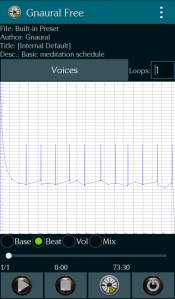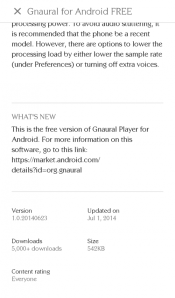I know, you’re reading this thinking what the hell are binaural beats?
Well, there’s a ton of convoluted information out there, but to put it very simply: binaural beats occur when two different frequencies of sound are played in each ear. This results is the listener perceiving a third different frequency.
Binaural beats have been studied for a range of different applications including reducing stress, treating depression, relaxation, meditation and the list goes on. Some research has produced positive outcomes while others show no effect. My favorite study so far resulted in a middle of the road finding:
“[I]t is clear that binaural beats do not represent a one-size-fits-all enhancement technique. They can be effective in enhancing brainstorm-like creative thinking in individuals with low striatal dopamine levels, but they can at the same time impair performance in exactly the same kind of task in others. On the one hand, this calls for more care in the propagation of binaural beats as a cognitive-enhancement method and a better understanding of the underlying neural and cognitive mechanisms. On the other hand, however, it also implies that previous failures to find positive effects of binaural beats on cognitive performance need not be taken as evidence against the efficiency of the manipulation. In fact, careful selection of individuals involving a systematic evaluation of their cognitive control profiles is likely to yield evidence of cognitive enhancement, even under conditions that proved ineffective by previous research.”
(Click HERE to read the full National Center for Biotechnology Information study.)
Where this applies to writers:
Like most writers (I hope I’m not alone anyway), I’ve had trouble concentrating. I have days where every little sound distracts my focus. The television (my husband lives here too), traffic, even the crickets and cicadas—sometimes they’re wonderfully relaxing, other times I wish mother nature had a mute button.
I’ve tried everything! From classical to ambient music and white noise, nothing seemed to help. (I don’t care what anyone says, white noise is horrible.)
So on one of my usual focus lacking nights, I did what we all do—got completely and utterly distracted by the Internet. Somehow, I managed to find a study on binaural beats and immediately hit the app store. What I found was Gnaural. While there is a paid version, I’m currently using the free one. (Though I’ll be upgrading to the paid version soon just to support the developer.)
About the app:
Gnaural is an opensource binaural beat generator available from SourceForge. The goal of this app, according to its creator is “to get everyone meditating”. For me, this app is even far more precious and useful. I have finally found something that helps me focus by blocking outside sound with a series of noises I can actually tolerate. I think I’ve been more productive in the last week than I have in the last three months combined!
The app is pretty simple to operate:
The opening screen:
Clicking the Gnarual icon will take you to a list of sounds:
(I alternate between the ‘Problem resolver’ setting and ‘Study time’ setting while writing. When reading for pleasure, I prefer the ‘Tibetan bowls’ or the ‘Babbling brook’.)
And the best part:
This app has minimal permissions and will only take up 542K on a mobile device.
If you have focus issues like me, I highly recommend this app:
To download or just to read more about it, visit Gnaural’s SourceForge page or Gnaural’s page in the Google Play Store



Thanks! I can’t wait to try this app. My house is so noisy, and my head’s even noisier.
Binaural beats are great for insomnia. I highly recommend The Meditation Podcast for beginners. Look for it on iTunes.
LikeLike